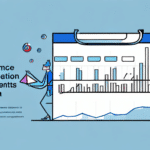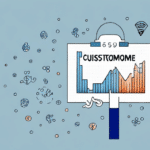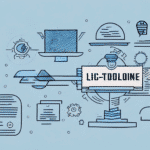Understanding the Customer Retention Rate Benchmark
In today's highly competitive business environment, customer retention has become a crucial metric for companies to monitor. It refers to the ability of a business to retain its existing customers over a specific period. The customer retention rate benchmark allows businesses to evaluate how effectively they are retaining customers compared to competitors and industry averages.
Why is Customer Retention Important for Your Business?
Retaining customers is essential for the long-term success and growth of a business. It is more cost-effective to retain existing customers than to acquire new ones. Repeat customers are more likely to spend more on products or services, become brand advocates, and refer others to the company. Additionally, a high customer retention rate indicates a satisfied and loyal customer base.
Key Benefits of Customer Retention
- Cost Efficiency: Acquiring new customers is typically more expensive than retaining existing ones.
- Increased Revenue: Loyal customers tend to make repeat purchases and spend more over time.
- Brand Advocacy: Satisfied customers are more likely to recommend your business to others.
- Higher Lifetime Value: Retained customers contribute more to the business over their lifetime.
The Benefits of Tracking and Benchmarking Your Customer Retention Rate
Tracking and benchmarking your customer retention rate provides insights into customer loyalty and highlights areas for improvement. It helps businesses understand how well they are meeting customer needs and expectations, enabling informed decisions to enhance retention strategies.
Insights Gained from Benchmarking
- Performance Comparison: Compare your retention rate with industry standards to gauge performance.
- Identify Trends: Detect patterns in customer behavior to address potential issues proactively.
- Resource Allocation: Prioritize efforts towards initiatives that effectively enhance retention.
How to Calculate Your Customer Retention Rate
Calculating your customer retention rate is straightforward and essential for understanding your business's performance in retaining customers. The formula is as follows:
[(Number of customers at the end of a period – New customers acquired during that period) / Number of customers at the beginning of that period] × 100
Example Calculation
If a company starts with 200 customers, acquires 50 new customers during the period, and ends with 220 customers, the retention rate is:
[(220 - 50) / 200] × 100 = 85%
What is a Good Customer Retention Rate?
A good customer retention rate varies by industry, but generally, a rate above 60% is considered healthy. Achieving an 80% or higher retention rate is excellent. However, it's essential to track your retention rate over time and strive for continuous improvement tailored to your specific business context.
Strategies to Improve Customer Retention
- Exceptional Customer Service: Prompt responses and personalized solutions enhance customer satisfaction.
- Loyalty Programs: Reward customers for their repeat business to encourage continued loyalty.
- Regular Engagement: Use email, social media, and other channels to stay connected with customers.
- Gather Feedback: Implement surveys and listen to customer feedback to make informed improvements.
Industry Averages for Customer Retention Rates
Customer retention rates vary significantly across industries. For example:
- Banking: Approximately 95%, driven by long-term relationships and trust.
- Telecommunications: Around 85%, due to long-term contracts and service reliability.
- E-commerce: About 30%, influenced by high competition and price sensitivity.
- Travel: Roughly 20%, as customers frequently seek the best deals and options.
Understanding your industry's average retention rate helps set realistic benchmarks and goals for your business.
Factors That Influence the Customer Retention Rate Benchmark
Several factors can impact your customer retention rate benchmark, including:
- Pricing: Competitive and fair pricing can enhance retention.
- Customer Service: High-quality support fosters loyalty.
- Product Quality: Reliable and valuable products keep customers returning.
- Brand Loyalty: Strong brand identity and trust increase retention rates.
- Competition: Market dynamics and competitor actions can affect retention.
Enhancing Customer Experience
A positive customer experience is paramount to retention. This includes ease of use, fast delivery, and personalized interactions. Engaging with customers through multiple channels and addressing their feedback promptly also strengthens loyalty.
The Role of Customer Experience in Improving Your Retention Rate
Customer experience (CX) is a critical determinant of retention rates. A positive CX leads to higher satisfaction, loyalty, and repeat business. Key aspects of enhancing CX include:
- Excellent Customer Service: Responsive and helpful support teams.
- User-Friendly Interfaces: Intuitive websites and applications.
- High-Quality Products: Consistently meeting or exceeding customer expectations.
- Personalization: Tailoring experiences and communications to individual customer needs.
Strategies to Improve Your Customer Retention Rate
Implementing effective strategies can significantly boost your customer retention rate. Consider the following approaches:
- Personalize Communication: Use customer data to tailor messages and offers.
- Develop Loyalty Programs: Reward repeat customers with discounts, points, or exclusive offers.
- Solicit and Act on Feedback: Regularly gather customer opinions and implement improvements.
- Provide Exceptional Service: Ensure all customer interactions are positive and helpful.
- Maintain High Product Quality: Continuously improve your products or services based on customer needs.
Measuring the Success of Your Customer Retention Strategy
To evaluate the effectiveness of your customer retention strategies, use the following metrics and methods:
- Retention Rate: Monitor changes over time to assess overall performance.
- Customer Lifetime Value (CLV): Calculate the total value a customer brings over their relationship with your business.
- Churn Rate: Track the percentage of customers who leave over a specific period.
- Customer Satisfaction Scores: Use surveys and feedback tools to gauge satisfaction levels.
- Net Promoter Score (NPS): Measure the likelihood of customers recommending your business to others.
Regularly reviewing these metrics allows you to adjust strategies and improve retention efforts effectively.
Common Mistakes That Could Be Hurting Your Retention Rate
Avoiding common pitfalls is essential for maintaining a high retention rate. Some frequent mistakes include:
- Failing to Engage Post-Purchase: Keeping in touch with customers after a sale fosters ongoing relationships.
- Ignoring Customer Feedback: Not addressing customer concerns can lead to dissatisfaction and attrition.
- Lack of Incentives: Not rewarding loyal customers may result in them seeking alternatives.
- Inconsistent Customer Service: Providing uneven support can erode trust and loyalty.
- Overlooking Personalization: Generic interactions can make customers feel undervalued.
By recognizing and addressing these mistakes, businesses can enhance their retention strategies and improve customer loyalty.
Case Studies: Companies with High and Low Customer Retention Rates
Examining real-world examples can provide valuable insights into effective retention strategies:
High Retention: Amazon
Amazon boasts a customer retention rate of over 90%, driven by its extensive product selection, competitive pricing, and exceptional customer service. Features like Amazon Prime add significant value, encouraging repeat business and long-term loyalty.
Low Retention: Groupon
Groupon has a retention rate of less than 50%, often attributed to the nature of its deals, limited product offerings, and the transient value provided to customers. This highlights the importance of consistent value and a broad range of offerings in retaining customers.
Best Practices for Maintaining a High Customer Retention Rate
To sustain a high retention rate, consider implementing the following best practices:
- Provide Excellent Customer Service: Ensure all customer interactions are positive and problem-free.
- Deliver High-Quality Products/Services: Consistently meet or exceed customer expectations.
- Engage Post-Purchase: Stay connected with customers through follow-ups and ongoing communications.
- Continuously Improve CX: Regularly update and enhance the customer experience based on feedback and trends.
- Leverage Emerging Technologies: Utilize AI, chatbots, and other technologies to streamline and personalize customer interactions.
Innovations in Technology and Their Impact on Customer Retention Benchmarks
Technological advancements have significantly influenced customer retention strategies. Innovations such as artificial intelligence (AI), chatbots, and social media platforms offer new ways to enhance customer experience and loyalty:
- Artificial Intelligence: AI-driven analytics can provide deeper insights into customer behavior and preferences, enabling personalized marketing and support.
- Chatbots: Automated chatbots offer instant customer service, improving response times and satisfaction.
- Social Media Engagement: Active presence on social media platforms facilitates direct communication and relationship building with customers.
Adopting these technologies can provide a competitive edge by enhancing the overall customer experience and boosting retention rates.
The Future of the Customer Retention Benchmark: Trends and Predictions
The customer retention benchmark is expected to become increasingly important as businesses adopt more customer-centric strategies. Emerging trends that will shape the future of customer retention include:
- Omnichannel Experiences: Seamless integration across multiple channels to provide a consistent and unified customer experience.
- Personalized Communication: Tailoring interactions based on individual customer data and preferences.
- Proactive Customer Service: Anticipating customer needs and addressing issues before they escalate.
- Enhanced Data Analytics: Utilizing advanced analytics to gain deeper insights into customer behavior and trends.
- Sustainability and Ethical Practices: Increasingly, customers value businesses that demonstrate social responsibility and ethical standards.
Staying abreast of these trends and adapting strategies accordingly will be crucial for businesses aiming to maintain and improve their customer retention rates.
Conclusion: Why You Should Focus on Improving Your Customer Retention Rate Now
The customer retention rate benchmark is a critical metric for any business aiming for long-term success and growth. Retaining customers is more cost-effective than acquiring new ones and can lead to increased revenue and referrals. To improve your customer retention rate:
- Provide exceptional customer service.
- Deliver high-quality products or services.
- Engage with customers post-purchase.
- Continuously enhance the customer experience.
In an increasingly competitive market, focusing on customer retention is essential to gain a competitive advantage and foster lasting customer loyalty.




















